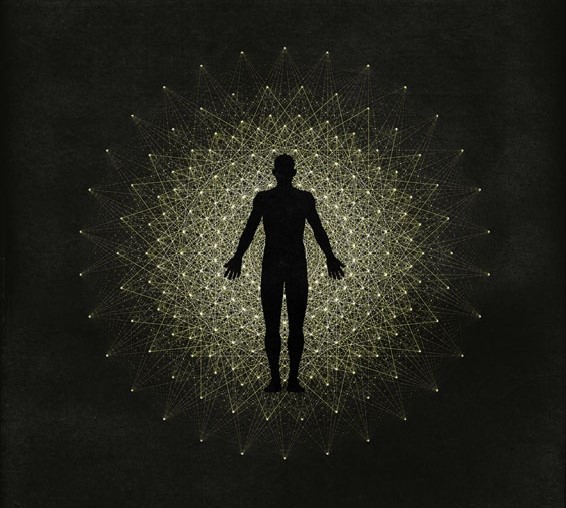The Architect & The Chemist

The men who saved the world
E
very now and then,
I stumble upon a piece of writing that challenges the way I think, words that require me to reassess things — things that were already assessed. One such piece was in the Atlantic, called “The Next Industrial Revolution”.
When I saw the title, I thought … ah — there’s some hyperbole … I took the bait. A prominent architect had written an essay about changing the very mechanics of our world. Intrigued, I read on.
But they didn’t sound like the words of an architect, more like a Copernicus, or a Galileo. As I read, notions I held to be true became hazy, indistinct; by the end of the article they were gone, replaced by something different. I was disoriented. I’ve read so few mind-bending essays in my life I had to go downstairs and smoke a cigarette and ponder a new paradigm.
The Environmentalist
I’ve always admired groups like Greenpeace, who risk their lives in daring exploits and sometimes illegal attempts to rescue our planet from what they see as legalized threats.
Annie Leonard, Greenpeace USA Executive Director:
“We ‘bear witness’ to environmental destruction in a peaceful, non-violent manner. We use non-violent confrontation to raise the level and quality of public debate. In exposing threats to the environment and finding solutions we have no permanent allies or adversaries. We ensure our financial independence from political or commercial interests.”
Even if I don’t know what’s going on — the environmentalists do. I can rest easy knowing they’re keeping watch. But this piece isn’t about heroics, or protests, or confrontations. Rather, something more subtle, certainly not headline material: the flaw of waste.
The Cons of Conservation
Conservation has been the mantra of recent years. The less we use of a resource, the better. Common sense, really. Or, is it?
‘Be efficient, it’s a good thing’. There are limited resources on our planet, so shouldn’t we conserve? According to William McDonough, philosopher / architect and co-author of “The Next Industrial Revolution”, this conservation narrative is a recipe for disaster — a collection of superficial myths that will eventually inspire us to ruin our planet.
Albert Einstein:
“The world will not evolve past its current state of crisis by using the same thinking that created the situation.”
The Situation
With one goal in mind, profit — and out of sheer ignorance of the breadth and scope of natural design processes — the Barons of Industry started off with fuzzy-headed thinking. They imagined a world where virtually unlimited resources could be used to make virtually unlimited profit. And they were virtually right, except for one, critical flaw in their plan: waste.
In the book Cradle to Cradle, co-written by McDonough and brilliant, German chemist Michael Braungart, the architect and the chemist present a common-sense, long-term strategy to repair this flaw.
Design comes first.
Cradle to Cradle (C2C) is an environmental design story, that tells how a crucial component of our world, Industry, has proved that, left to its own devices, it tends to lose sight of environmental concerns — the very environment that made it possible to successfully operate a business in the first place — the flaw in the design.
Within the current design, even Science could be used as an arm of Business, that might select — in non-Darwinian fashion — for studies that further its own interests.
The Perils of Eco-efficiency
We have created a system that loses resources instead of keeping them. We need more resourcefulness not more efficiency.
McDonough:
“Eco-efficiency is an outwardly admirable and certainly well-intended concept, but, unfortunately, it is not a strategy for success over the long term, because it does not reach deep enough. It works within the same system that caused the problem in the first place, slowing it down with moral proscriptions and punitive demands. It presents little more than an illusion of change. Relying on Eco-efficiency to save the environment will in fact achieve the opposite — it will let industry finish off everything quietly, persistently, and completely.”
The Flaw of Waste
In Cradle to Cradle, McDonough and Braungart speak of a ‘Cradle to Grave’ design, a crude design, and the flaw of the original Industrial mindset.
Braungart:
“From our perspective, products that are not designed particularly for human and ecological health are unintelligent and inelegant — what we call crude products. In 1991 we co-authored the Hannover Principles, design guidelines for the 2000 World’s Fair that were issued at the World Urban Forum of the Earth Summit in 1992. Foremost among them was ‘Eliminate the concept of waste’ — not reduce, minimize, or avoid waste, as environmentalists were then propounding, but eliminate the very concept, by design.”
The flaw of waste is the result of bad initial design. The 19th century Barons of Industry were focused more on good profits than good ecological hygiene. In their defense, little was known back then about the grand scheme of Ecology.
Regulation
Tradition tells us that Industry needs to be regulated. If an industry is harming the environment, this harm should be averted — as much as is reasonably and economically feasible — to reduce the negative impacts. With a simple, childlike grace, McDonough challenges this tradition:
“Why not start with something good first, so we don’t have to regulate it to make it less bad?”
Regulation attempts to make a bad thing less bad, or — more good? But this is not a logical alternative to good. If it’s bad, it will always be bad. We can struggle (and spend lots of resources) to reduce its badness, but it’s still bad. McDonough proposes something better, something simpler: begin with a good design, and good will follow.
Cycles
McDonough and Braungarts’ C2C Framework articulates a conceptual shift: There are two cycles: the earth cycle and the man-made cycle (or, the organic cycle and the technical cycle). Within these cycles are nutrients: organic nutrients and technical nutrients.
The first cycle, the Organic cycle, is the one through which man evolved. Abundant and sustainable, this cycle has proven its superiority by our presence here today.
In this marvel of design, there is no waste to speak of. Even an animal’s waste converts to food for trillions of microorganisms (the unsung heroes of our planet). So, linguistically, ‘waste’ — in this context — is incorrect.
Not so long ago, and armed with fuzzy linguistics, Man amended this Organic cycle by putting another cycle on top of it—a Technical cycle — which drew its abundance from a new system, an experimental system — an unnatural one.
Where there was originally only one cycle, now there were two. And they are not naturally complementary, in some cases mutually exclusive. We’re only now learning how to organize them so they work in harmony with each other.
Perhaps the Lords of Industry were unaware of the natural laws of design, or, being aware, thought they might trump them with a set of their own laws. But their unnatural abundance came with a heavy liability: it was a false abundance, because it was not sustainable.
McDonough:
“We see a conflict between industry and the environment as a design problem — a very big design problem”
The critical design flaw was allowing these, often mutually exclusive, cycles to mix when they should’ve been kept apart. Allowed to mix, they contaminated each other beyond repair and both were lost forever. The only thing left to do was throw them away. But since there really is no place that’s ‘away’, the concept of waste was born. And the waste pollution was put in holes, to fester, unnaturally.
We’ve poured technical waste pollutants into our rivers and oceans, our air, even exposed our bodies to chemicals we knew little about. Now that we know about them, there’s little reason to let this continue.
There’s no need to make ‘waste’ to clog up and pollute our lives, to pay regulators exorbitant sums to keep things ‘acceptably clogged and polluted’ when we could be free from this worry — free from waste, which should never have even been in the picture.
C2C
Simply, we’ve allowed Technical to mix with Organic. C2C remedies this. Within its design, everything — everything we use will either go back to where it came naturally, or be sent back to where it came manually.
With this amendment we will correct the flaw in the original amendment; we will regain our natural abundance, and there will be no need for regulation, or worry — or liability.
When a TV, computer, or smartphone breaks, we won’t need to throw them away; they will be reused to make something new, and something better.
McDonough:
“Customers would buy the service of such product, and when they had finished with the products, or simply wanted to upgrade to a newer version, the manufacturer would take back the old ones, break them down, and use their complex materials in new products.”
We will be able to rent every conceivable product, from cars to cameras and, when we’re done with them, get a new one. The old one will be fully recycled. A near-zero loss of resources if kept within the technical cycle. This shines a whole, new light on the design of ownership.
May there come a day when everything technical is rented. Made, used, then remade again. It’s happening already, especially with digital things, one of the things I think the cyber culture got right.
Under this Cycle-redesign, McDonough says the earth can sustain the 10 billion people expected by the year 2050 — in abundance.
Industry listens to consumer preferences. With informed choices about what and how we consume, we can literally redirect manufacturing processes, and remake the way we make things.
Power is shifting to the buyer’s hands. We can, we should control the course of Industry with our wallets. With conscious consumer habits, we can redesign the world+

Thank you, Markos Kay, for your cool image.
